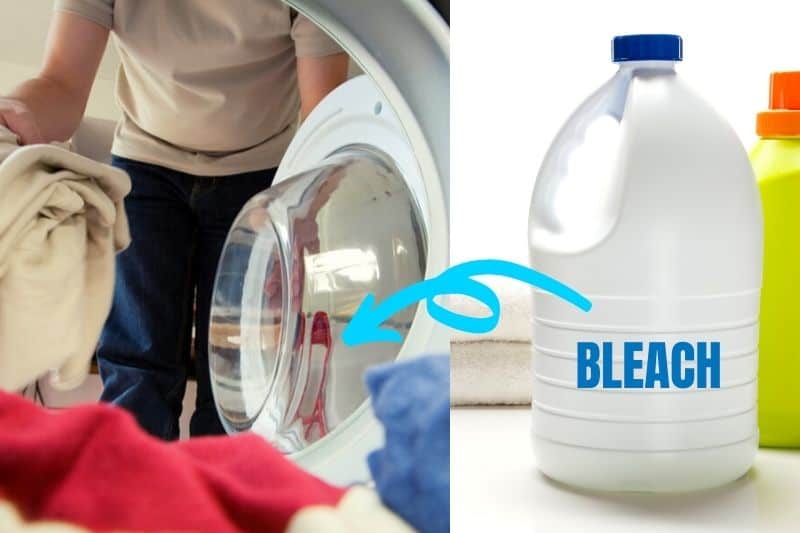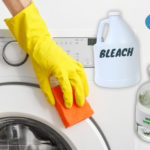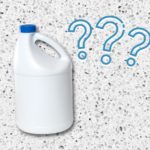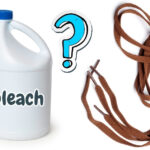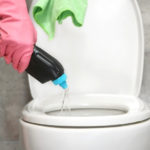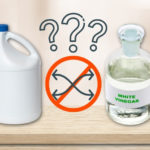Whether you are looking to deep clean the inside of your washing machine or achieve extra-white whites, you might find yourself asking whether you can use bleach to achieve your end goal.
The good news is that you certainly can use bleach in your washing machine!
Using bleach in a washing machine can kill off any bacteria, grime, and other nasties that can develop on clothing or inside the machine. However, it is important that you ensure that the bleach is used correctly to avoid damage to either your laundry or your equipment.
Cleaning the Washing Machine with Bleach
Bleach is a powerful cleaning chemical that can cut through just about any grime, bacteria and scum that has built up inside the washing machine.
Before getting started with any cleaning chore that uses bleach, make sure that you wear gloves and adequately protect any surfaces or furnishings that could be damaged by the chemical.
Make sure to ventilate the room you’re using bleach in and, if you have respiratory sensitivities, you may want to wear a face mask.
Cleaning the filter
A washing machine’s filter is designed to trap all the lint, hair, and debris that can be left behind after a laundry cycle finishes. If the filter ends up blocked up, it can prevent the washing machine cycles from running properly.

If you have never cleaned the filter before or it is a new washing machine, it might be worth checking the machine’s manual to find out how to locate and remove the filter.
When you remove the filter, it is likely that a stream of dirty water will run out. Before you start, make sure that you have a towel handy to catch this excess water.
Once the filter has been removed, you can pull off any visible dirt and lint, then run it under a warm tap to get rid of any remaining dirt.
If the filter shows signs of mould or stubborn dirt build-up and warm water isn’t enough, you can wipe over the areas with a damp, clean cloth dipped in bleach to cut through the bacteria and grime.
Before replacing the filter in the machine, make sure that you rinse all traces of bleach and residue away, and wipe it down with a clean cloth.
Cleaning the gasket
The gasket (or seal) in the washing machine’s door is notorious for collecting grime and mould.
Working out the best way to approach this cleaning task will vary depending on your unique machine. These seals are designed to fit tightly to prevent leaks, and it is important that you do not damage or dislodge the gasket.
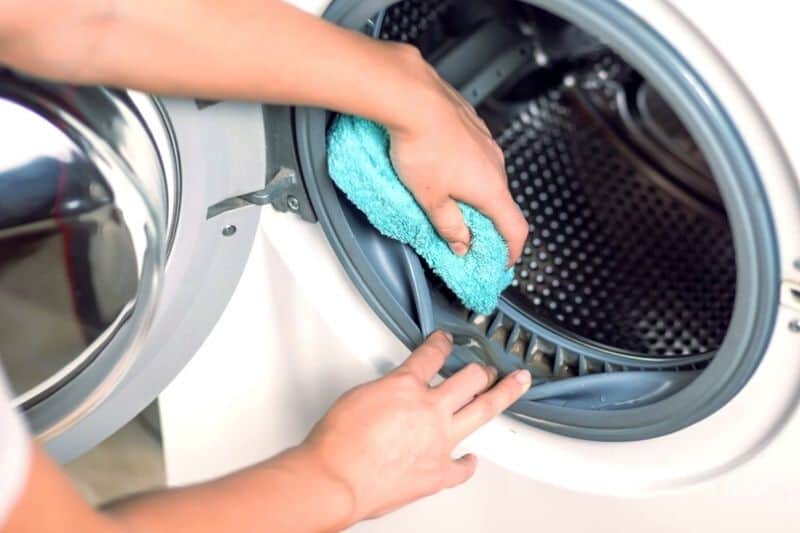
Before you get started, have a good look at the gasket on the inside of the door. The gaskets in some washing machines can be turned inside out, which will make cleaning considerably easier.
Start with a clean, dry cloth, and rub this around the surface of the gasket. If the gasket cannot be turned inside out, you can cover a finger with the cloth, and push it into the seal.
If the seal needs a thorough clean, the cloth will usually come away showing visible signs of mould or mildew.
Carry on wiping the surfaces of the gasket until the cloth comes out clean, you might need to use multiple cloths to achieve this if the gasket is particularly dirty.
After wiping away the surface mould and mildew, mix up a solution of one part bleach with ten parts water.
Spray the solution either directly onto the seal or onto the cloth and work your way back around the gasket. The bleach will lift away any remaining mould and will kill any bacteria that are hiding in the folds of the seal.
Cleaning the Drum and Hoses
The drum and hoses are generally some of the easiest parts of the washing machine to clean.
Simply put around 60 ml of bleach in the detergent compartment, and run the machine empty on a hot, long cycle without any additional cleaning products.
The combination of bleach and hot water will sanitise all the surfaces on the inside of the machine and get rid of any nasty odours.
Run an empty cycle (with no cleaning products) after to flush away any traces of bleach that may be clinging to the surfaces. Running this cycle with bleach can mean that your laundry will come out a lot cleaner and fresher in the future.
Washing Laundry with Bleach
Using bleach can give an added boost to a laundry cycle, especially if you are washing white articles that have lost their vibrance over the years.
You might also want to use bleach if you are particularly worried about killing bacteria and viruses, for example when washing reusable face masks.
However, some laundry items are not bleach safe.
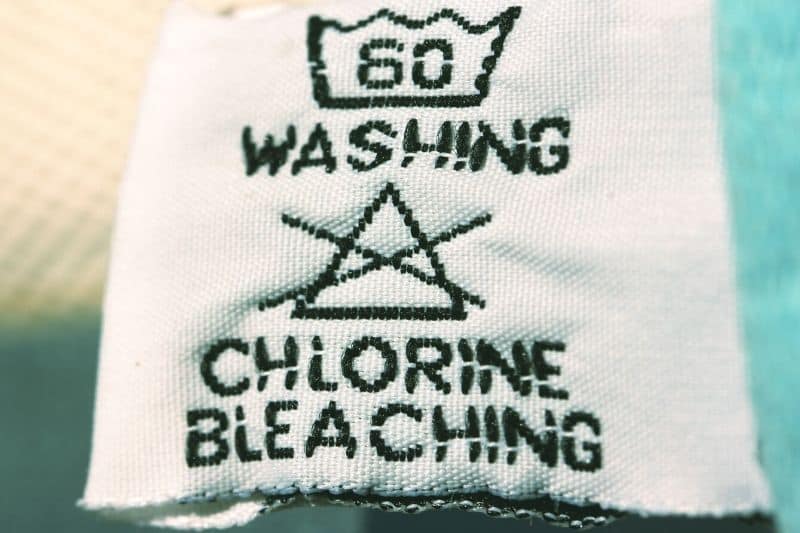
Before starting, check the label for any manufacturer’s directions as to whether they are bleach stable. Some garment labels might specify that they can be used with colour-safe bleaches, and others might be sensitive to those too.
If you are unsure as to whether your garment is bleach safe, you can conduct a patch test on a small, hidden area of the garment.
To conduct the patch test, make a solution with your bleach of choice and water:
- Place a small amount of bleach on a hidden area of the garment, and leave it to sit – ideally overnight.
- In the morning, carefully remove the paste trying not to transfer bleach to other areas of your item.
- If the colour in the garment has been affected in any way, the dyes in the fabric are not bleach-stable and so should not be washed or soaked in bleach or bleach-based cleaning chemicals.
Once you are satisfied that the laundry in question can be washed with bleach, set the machine’s cycle up on the hottest safe heat setting.
Bleach works best at high temperatures but never go above the recommended maximum on the manufacturer’s label. Add your usual laundry detergent to the dispenser drawer.
Some washing machines have a purpose-made bleach dispenser, and if yours does, add a capful of bleach to this.
If your machine is front-loading and does not have a bleach dispenser, mix 1 capful of bleach with 1 litre of water, and pour it directly into the machine’s drum. This will ensure that no item of clothing meets neat bleach.
If you have a top-loading washing machine, start the cycle, and wait for the machine to fill up. Once the machine is full of water, sprinkle a capful of bleach over the top of the laundry and water.
Run the washing machine on your usual cycle, and then dry your laundry as usual.
Try to avoid hanging laundry that has been washed in bleach over carpeted areas, just in case any remnants of the bleach remain that could mark the fibres.
Important Considerations When Cleaning with Bleach
If you are planning to either wash clothing or clean the washing machine with bleach, it is important that you measure the bleach out accurately.
Using too much bleach can produce a lot of foam when combined with hot water. Bleach can also have a negative reaction with some other cleaning products, so never use it in combination with other chemicals as it can damage some surfaces.
Bleach is an irritant, so regardless of how you are using bleach, it is important that you protect yourself by wearing gloves and taking any other necessary preventative measures.

Lover of coffee, painting, and all things cute and fluffy. I’m always on the lookout for easier, more gentle ways to tackle awful household chores.
